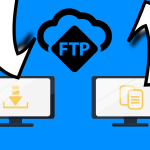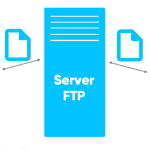Imagine running a business with a strong and dependable network, ensuring seamless connectivity to the Internet and between different locations. However, unexpected network outages can occur, wreaking havoc on the business’s revenue and causing considerable harm. That’s where network redundancy comes into play. It acts as a safety net, enabling the network to respond swiftly and restore services in the event of a significant downtime. With network redundancy, you can ensure that your business stays up and running smoothly, even in the face of unexpected challenges. So, why take chances when you can have the peace of mind that network redundancy brings?
Network redundancy is a network strategy that ensures uninterrupted services and secure flow of valuable data, even in the event of a network failure. Having redundant networks is essentially having a reliable network that greatly benefits customers.
Implementing network redundancy involves deploying multiple network devices and technologies, resulting in a more intricate network structure. The complexity of the network design can make understanding it more challenging and raises the potential for human errors and software bugs to cause new failures. Hence, it is crucial to carefully plan, design, and implement network redundancy. The advantages gained from doing so far outweigh the risks involved.
Types of Network Redundancy
Creating a redundant network necessitates a thorough comprehension of how to tackle different challenges involved in the process. Here are some important factors taken into consideration while designing network infrastructure to establish redundant systems that serve as backups, ensuring uninterrupted network services:
- Network redundancy should be a key focus to ensure continuity.
- Carefully addressing various types of challenges is crucial in designing a redundant network.
- The primary goal is to establish fail-safe systems that guarantee uninterrupted network services.
- Strong emphasis should be placed on network infrastructure design considerations.
- Designers need to have a deep understanding of the required tasks and challenges involved in order to achieve network redundancy.
Pathway Redundancy
Pathway redundancy is implemented in the network to ensure multiple alternate paths for information transmission. In case a link fails, network devices establish alternative routes, guaranteeing continuous network availability.
Power Redundancy
Having a reliable source of electricity is crucial for the functioning of network devices. Whether you have a basic equipment room or a sophisticated data center, it is essential to have a backup power supply in place. This ensures that in case of a power outage, your network services can continue to run smoothly. Implementing power redundancy solutions, such as having a generator or a UPS (uninterruptible power supply) on-site, guarantees uninterrupted network service.
Geographic Redundancy
Geographic redundancy guarantees that in the event of a major outage, such as a city-wide power shortage, that surpasses the capabilities of backup systems, a secondary data center located in a different area can seamlessly take over operations to ensure uninterrupted business operations.
Data Redundancy
Data redundancy is a common occurrence alongside any type of redundancy mentioned above, as data is recognized as a vital asset for businesses and organizations. That’s why it is crucial to have additional copies of data stored on a separate backup server or in the cloud. This ensures that data can be easily accessed, even in the event of unexpected downtime.
What are the benefits of Network Redundancy?
By implementing network contingency measures, businesses can avoid losing revenue due to unexpected outages. It is worth noting that although these downtimes are not planned, they can still be minimized with proactive solutions. Here are some key advantages of having robust backup systems throughout your network:
- Network contingency: By having a solid network contingency plan in place, businesses can effectively mitigate the impact of unplanned outages, reducing potential revenue loss.
- Network redundancy: Incorporating redundant network systems ensures that there are backup components in place, providing an additional layer of protection against network failures. This redundancy helps to maintain uninterrupted operations and prevent any disruptions that could result in revenue loss.
Having a comprehensive network contingency strategy not only safeguards businesses from revenue loss but also helps them to stay prepared and maintain uninterrupted operations.
Implementing redundant networks offers several advantages, ensuring 24/7 network availability. This is particularly crucial for customers who rely on round-the-clock services, such as hospitals and banks.
One of the key benefits is improved security. Redundant networks allow for state-of-the-art security measures and successful compliance audits. Even during downtime, sensitive information remains protected as team members work to isolate and resolve any security concerns.
Network redundancy also addresses the issue of latency. With multiple paths to access the same location, the chances of experiencing slow connections are significantly reduced.
However, perhaps the most important benefit of network redundancy is business continuity. Regardless of the catastrophe, the network will have a disaster recovery plan in place and continue to serve its customers. Whether it’s a major problem or a minor inconvenience, the business can keep running smoothly and cater to its clients.
In summary, network redundancy ensures uninterrupted network availability, enhances security measures, reduces latency, and guarantees business continuity. With these benefits, customers and organizations can rely on a robust and reliable network infrastructure.














